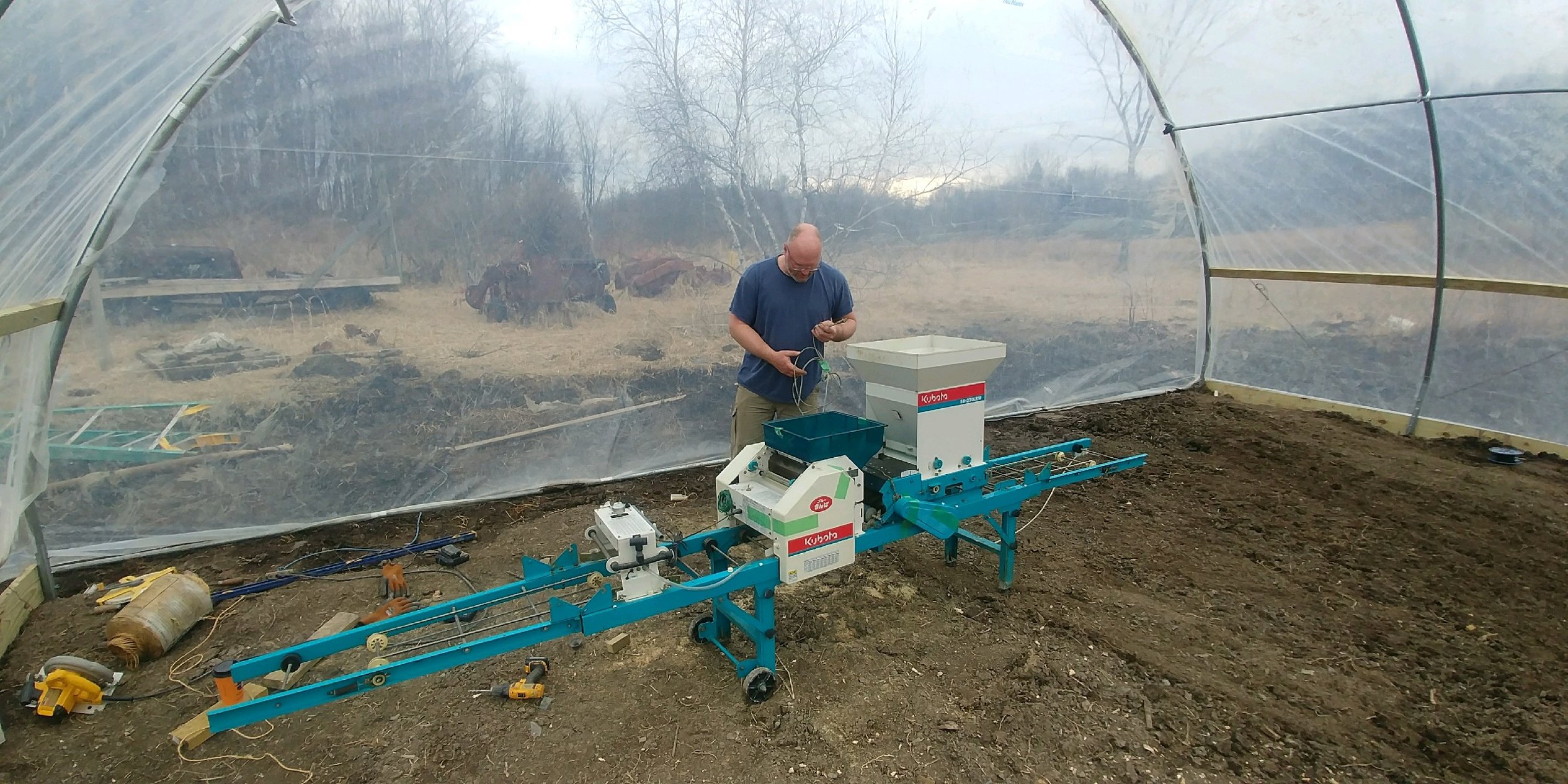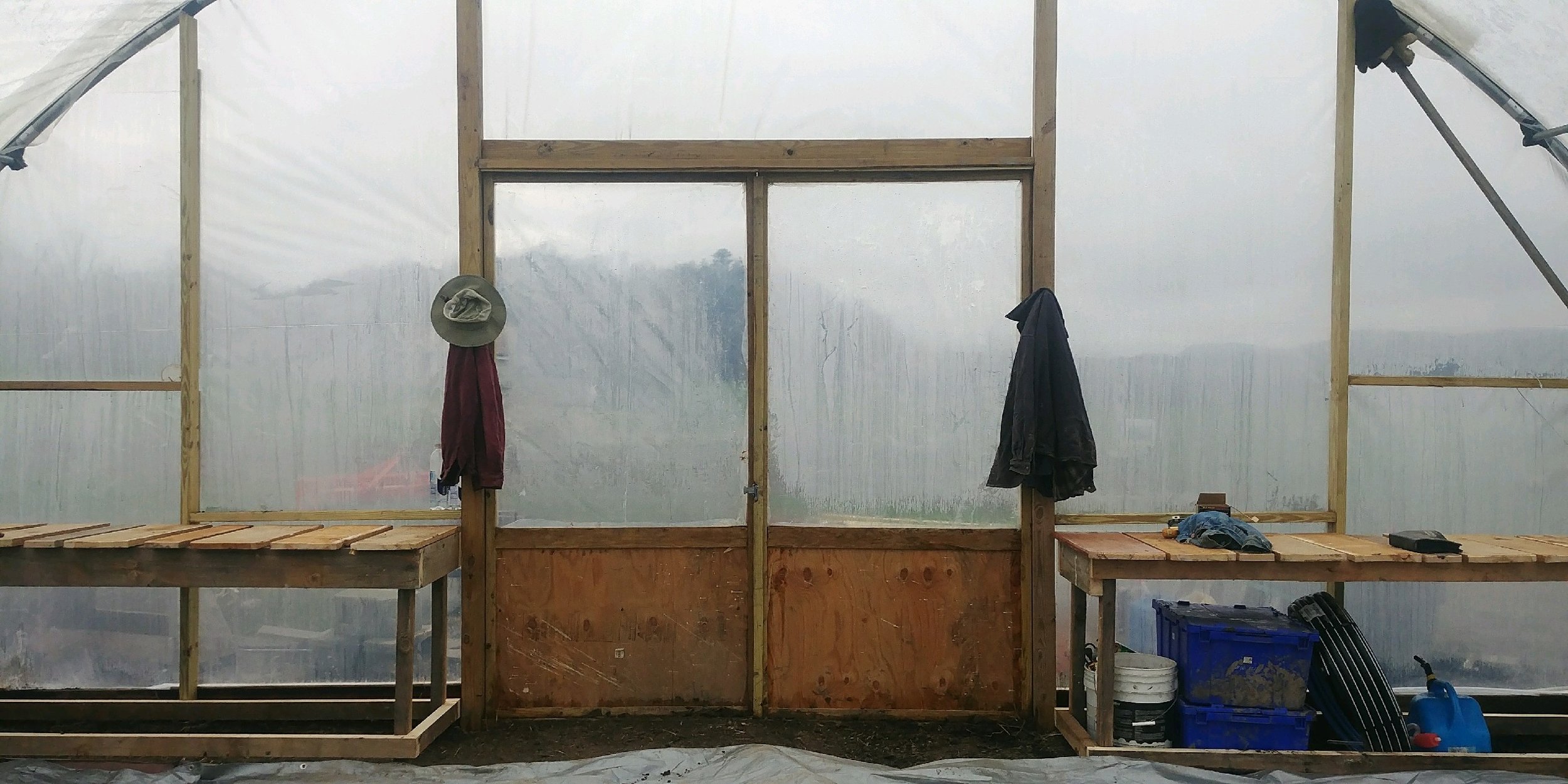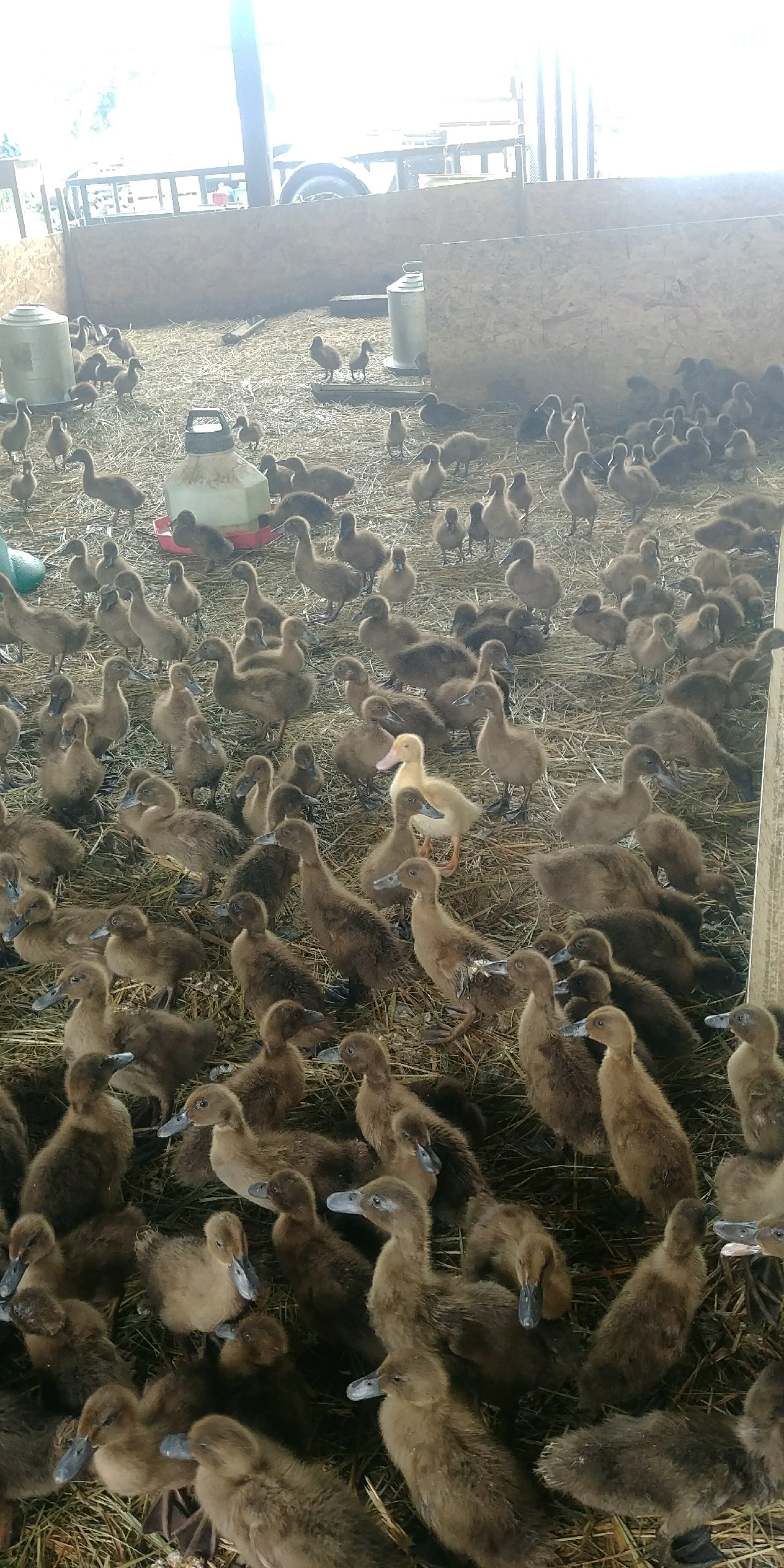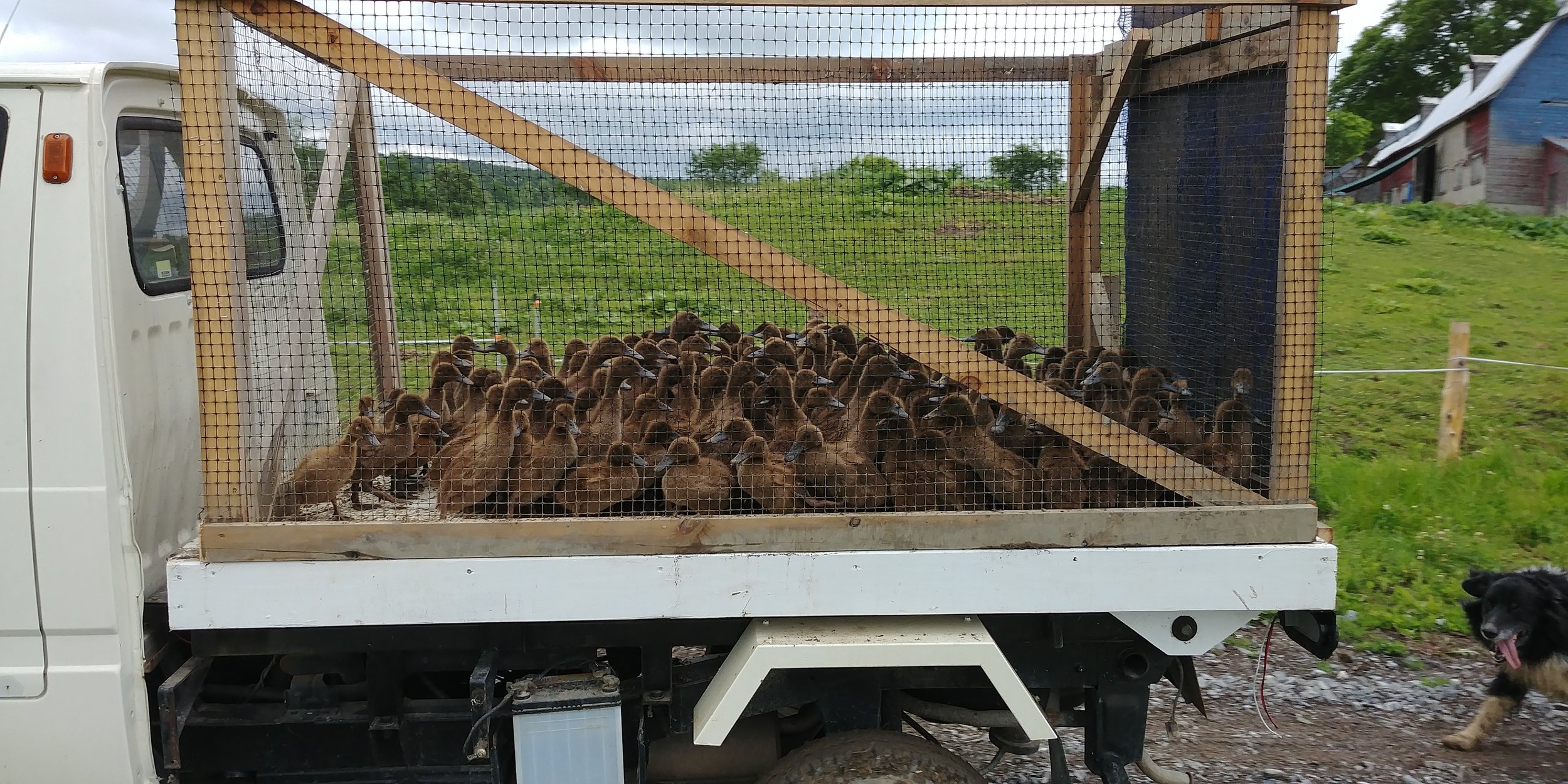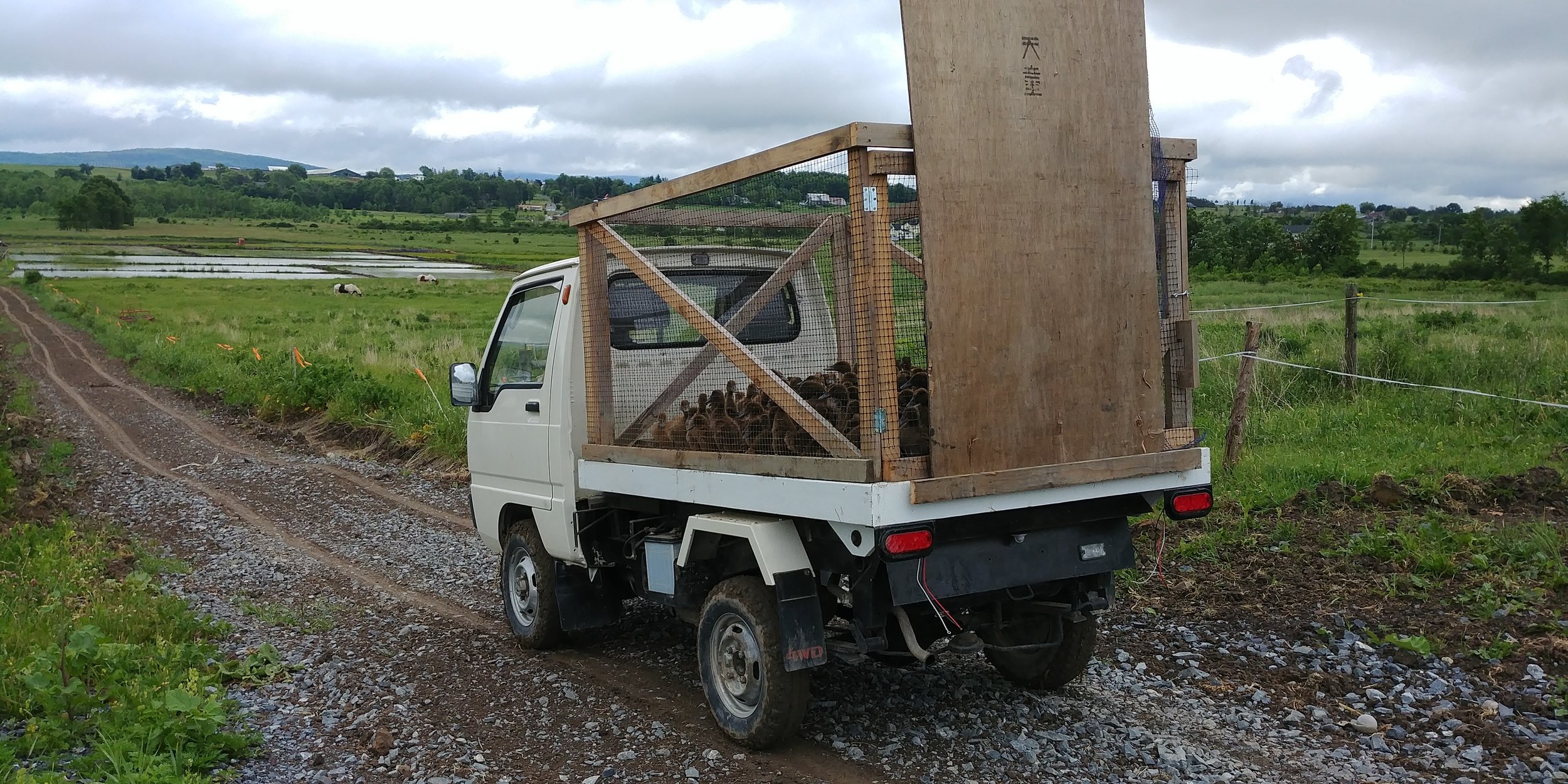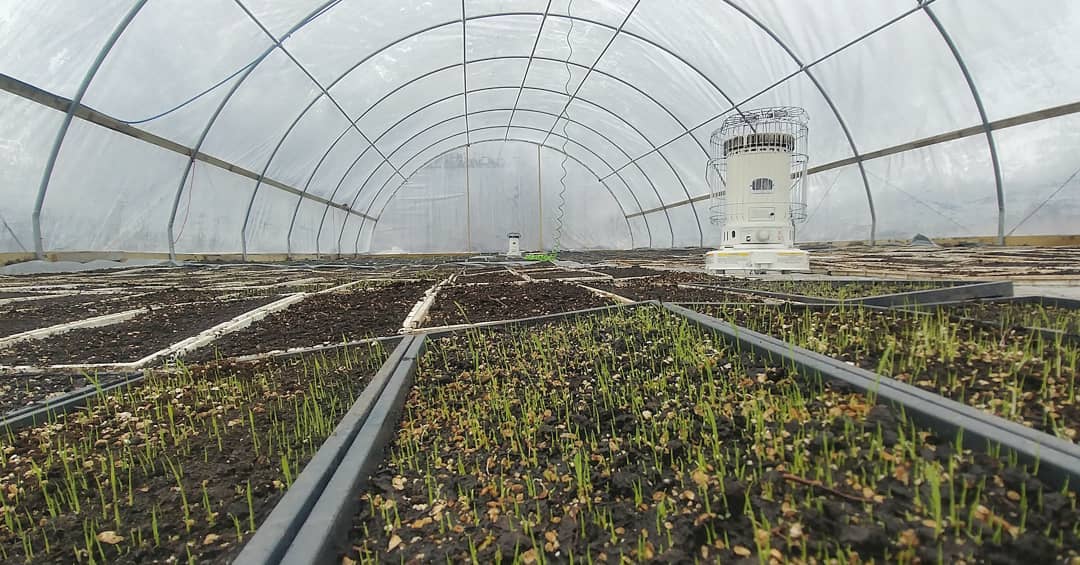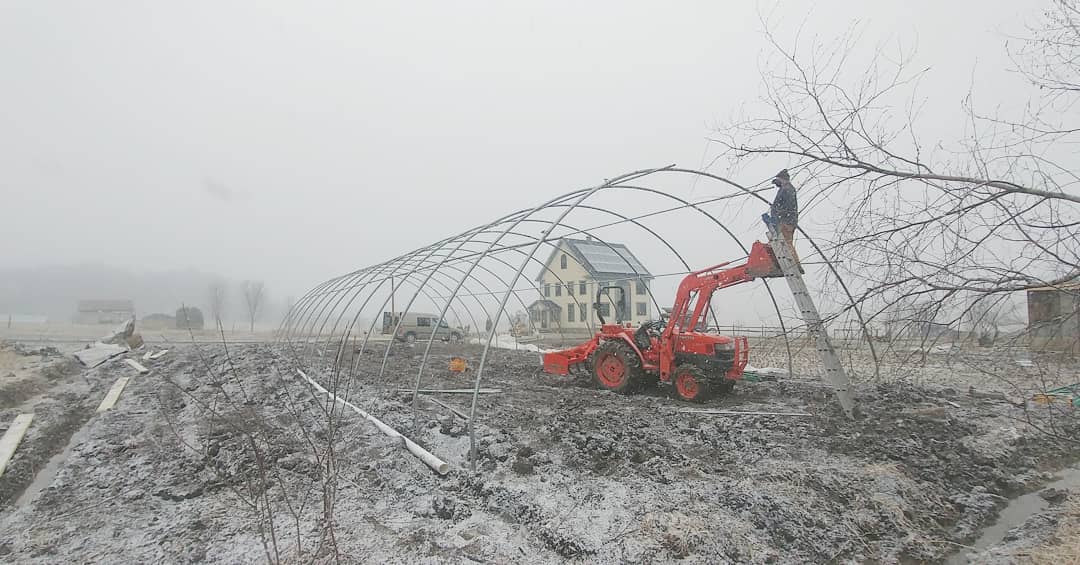Summer 2018 - Drought Tests the Limits of the System!
The bottom of a drainage ditch usually full of water.
I kind of got into rice farming based on observation and intuition. Clearly, my land wanted to be a wetland. Over the years prior to my coming here, past farmers had made various changes to thwart this tendency. But the basic topography, which is a flat plain covered with heavy clay soils, just wants to hold onto its water most of the time. Even when tiles are buried and drainage ditches dug, they tend to be filled in fairly quickly with sloughing clay mud, as the land works back towards what it was before European-style agriculture came here -- a wetland.
Having seen a rice farming culture at work in Japan, I decided to apply a version of that to my land here. And generally, rice farming has proved to be a pretty great fit for this otherwise difficult-to-love parcel of New England farmland. Rather than curse the clay as we Addison County farmers often do, rice farming helped me to learn to love it.
Even the storms that increasingly define our summer rainfall here don't cause worry to the rice farm. In fact, they help to quickly recharge the storage pond, ensuring that I have adequate irrigation water throughout the early summer. And a cloudburst of an inch or two of rainfall merely means that water in the paddies is raised by so many inches, until any excess drains back into storage ponds. I never have to worry about erosion or anything like that.
This year though, there has been some worry. While elsewhere in the state there's been adequate rain, here in Ferrisburgh we are abnormally dry. Since late May there have been enough showers to periodically wet the surface of the soil, but never enough rain to result in runoff. Every ditch and small stream in our area has dried up. Our normal rainfall for June is 3.5 inches or so, but we've only received about 1", and the month is nearly over. All this has pushed our system, which is based on surface water collection and retention, to the utmost limit.
Our pond, which holds around 200,000 cubic feet, or about 1.5 million gallons, is down to the last 5% or 10%, with some worried fish . The rice in the field looks great...for now...perhaps the best ever.. but without adequate water to suppress weed growth in the coming weeks, the season is on the edge of a knife.
In past years, our storage pond has always sufficed. Sometimes we have pumped the water level down pretty far...but never this far! And with no serious rain in the forecast, at least not for sure, we are now making the unprecedented move of piping metered town water down to the fields to help maintain our water levels wherever critically needed. Hopefully that modest water input will help us hold things together until we start getting rain closer to our normal averages.
And, in the silver lining department, we can at least use the opportunity of low water to enhance our pond and canals. We now have a small excavator on the farm, which has allowed us to make great strides towards the Japanese-style infrastructure I have been coveting since visiting rice farms there in 2015--featuring narrow roads criscrossing the project that are driveable with a tractor or minitruck, and crisp, uniform ditches and berms.
This year's crew includes Rachel Shannon, a Food Systems major from UVM, and Andon Whitehorn, a trained sushi chef and understudy partner rice farmer. We've been pushing ahead despite the water challenges.
Generally, I'm still confident that the system is well designed and we're simply in a weird year, facing drought at the worst possible time for our operations yet doing okay. We're doing our best to make sure that both water collection and water storage are upgraded in time for next year.
The reservoir pond...lowest it's ever been since we began growing rice here.


